Horizon Europe proposal tips: How to make your proposal stand out from the crowd?
12 tips for a convincing proposal
Which proposals get funded and which don’t? Does that seem like rocket science to you? No worries – although it depends on many factors which projects get the go-ahead, there are some essential things you might consider to increase your chances of success.
Read our Horizon Europe proposal tips to help assemble an outstanding project proposal.
Published on 12/09/2023 by Marlene Kopf
Tip #1 – Take your time!
Tip #2 – Follow formal requirements and content guidelines.
- Applications must be complete and contain all parts, mandatory annexes, and supporting documents.
- Applications must be readable, accessible, and printable.
- Applications must include a plan for exploiting and disseminating results, including communication activities (not applicable for proposals at the first stage of two-stage calls or unless otherwise provided in the specific call conditions).
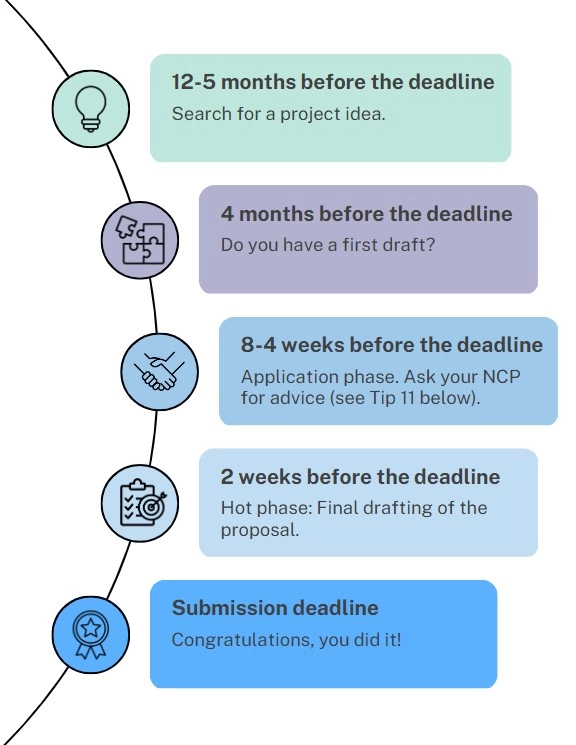
Eligibility is checked by EU staff: If you spot an issue, you should inform the EU staff.
- Eligible activities are the ones described in the call conditions.
- Minimum number of partners as set out in the call conditions (at least one independent legal entity established in an EU member state and at least two other legal entities established in a member state or an associated country).
- Participants that are public bodies, research organizations, or higher education establishments from member states and associated countries must have a gender equality plan in place. (The gender equality plan is not part of the evaluation criteria, but the existence of a gender equality plan is checked by EU staff.
- Other criteria may apply on a call-by-call basis as set out in the call conditions. In a few cases, the call conditions in the topic can modify the interpretation of criteria.
For more detailed explications, look at this document compiled by the European Commission.
To follow the requirements, one of the most essential, basic Horizon Europe proposal tips is:
Read the topic text carefully and relate the application precisely to the call text.
Proposals not precisely tailored to the call description are usually sorted out. Here is an example of phrases you should not neglect, taken from the call text of HORIZON-CL6-2024-ZEROPOLLUTION-02-2-two-stage.
“Expected Outcome:
Successful proposals will support researchers and innovators in improving bio-based systems’ environmental performance and circularity in industrial sectors. Project outcomes will contribute to enhancing circular bio-based systems operating according to planetary boundaries, replacing fossil-based systems and their carbon footprint, mitigating climate change, and protecting air, water, and soil quality along industrial value chains, in line with the European Green Deal and the EU zero pollution action plan.
Project results are expected to contribute to the following desired outcomes:
- …
- …
Scope:
Pollution from anthropogenic activities undermines the integrity of Earth’s ecosystems and severely affects the natural resources essential for human life. The EU bioeconomy strategy 2030 sets environmental protection as the basis of the modernization of bio-based industries in the Union to ensure a trustful green transition of the EU economy away from a linear fossil-based system.
To develop solutions for preventing and controlling pollution from bio-based industries, proposals should:
- …
- …
Where relevant, proposals should seek links with and capitalize on the results of past and ongoing EU-funded projects, including under the Circular Bio-based Europe JU and other partnerships of Horizon Europe.
In this topic, integrating the gender dimension (sex and gender analysis) in research and innovation content is not a mandatory requirement.
Specific Topic Conditions:
Activities are expected to achieve TRL 4-5 by the end of the project – see General Annex B.”
Tip #3 – Be accurate and appealing!
Avoid spelling errors and careless mistakes.
Format the text carefully.
Choose an attractive layout!
If possible, create a logo and use the colors used as a “corporate design” theme.
Tip #4 – Avoid text deserts.

Tip #5 – Make important information visible.
- Please leave a little space; filling all the space to the last page is unnecessary.
- Instead, be concise and precise.
Highlight important information. Whether by boldface, underlining or colored marking, or a frame around essential passages.
Name important things clearly; do not assume implicit knowledge!
Tip #6 – Use meaningful graphics.
Visualize and illustrate!
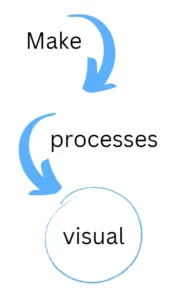
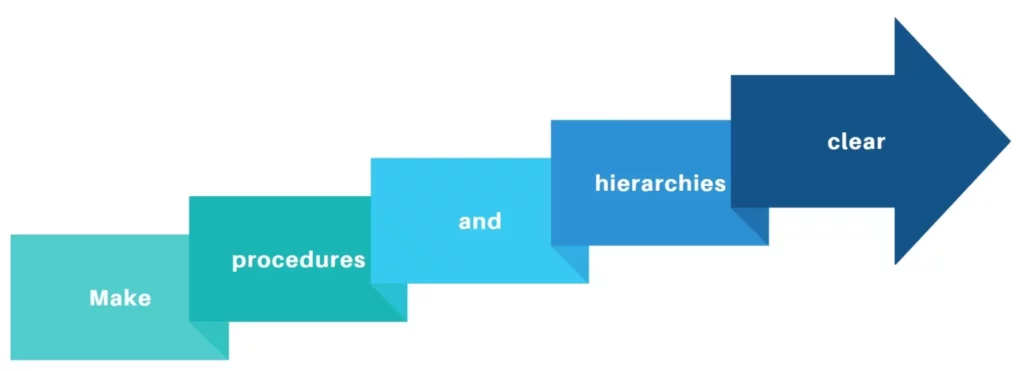
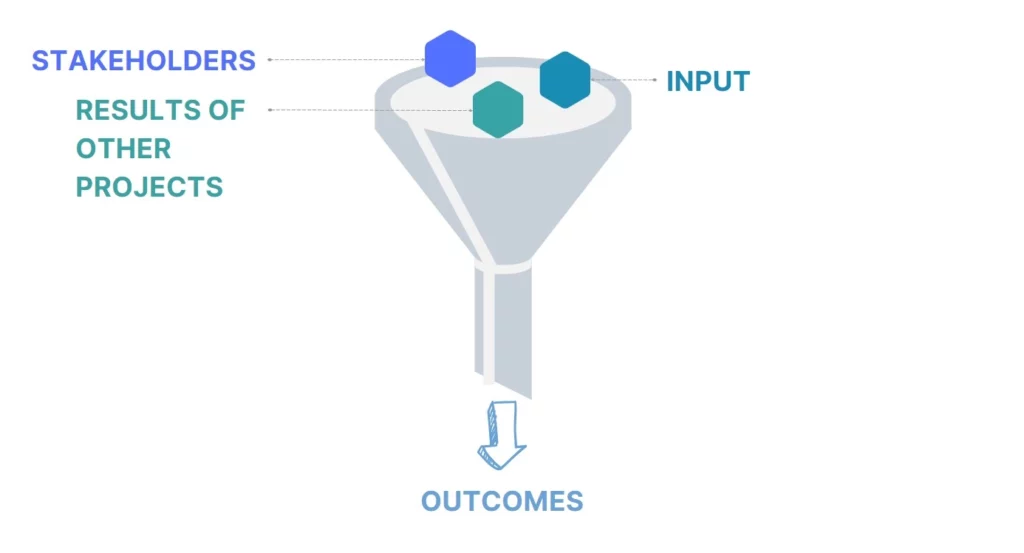
Tip #7 – Place information where reviewers expect and can find it.
Keep in mind the evaluation criteria that will guide the reviewers.
Excellence:
- Clarity and pertinence of the project’s objectives and the extent to which the proposed work is ambitious and goes beyond the state of the art.
- The soundness of the proposed methodology, including the underlying concepts, models, assumptions, interdisciplinary approaches, appropriate consideration of the gender dimension in research and innovation content, and the quality of open science practices, including sharing and management of research outputs and engagements of citizens, civil society and end users where appropriate.
See also our tips on writing an outstanding excellence section for more information beyond this Horizon Europe proposal tips list.
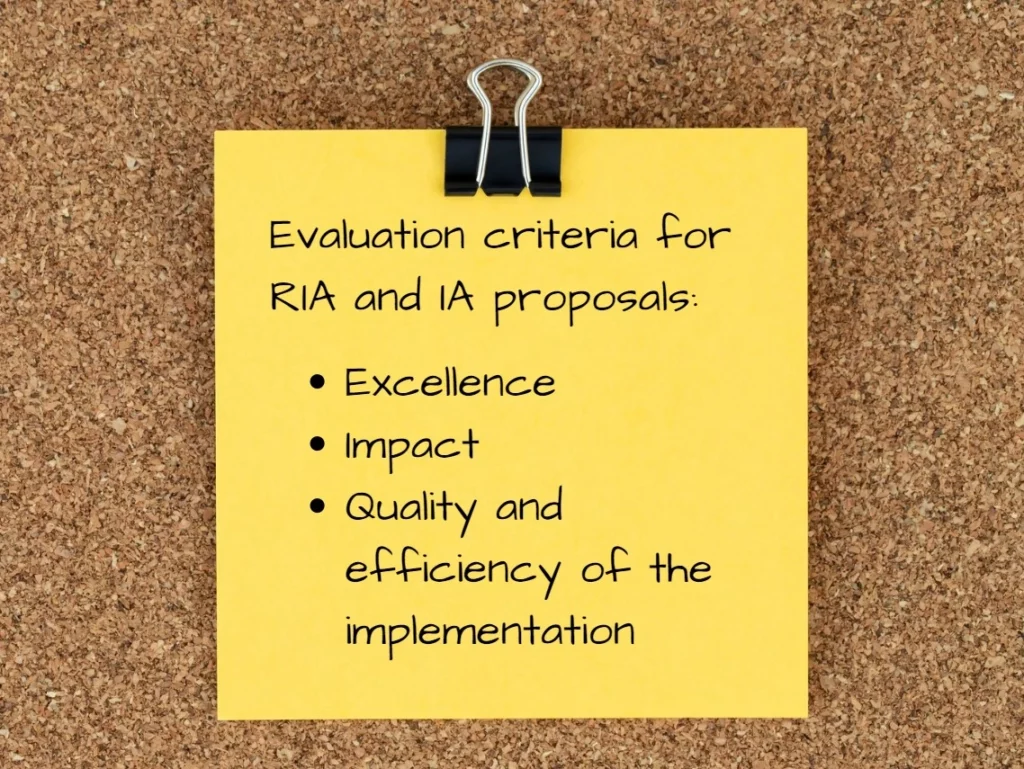
- The credibility of the pathways to achieve the expected outcomes and impacts specified in the work program and the likely scale and significance of the contributions due to the project.
- Suitability and quality of the measures to maximize expected outcomes and impacts, as set out in the dissemination and exploitation plan, including communication activities.
If you want to go further, we recommend considering our tips on optimizing the impact section to complement these Horizon Europe proposal tips.
Quality and efficiency of the implementation:
- Quality and effectiveness of the work plan, assessment of risks, and appropriateness of the effort assigned to work packages and the resources overall.
The capacity and role of each participant and the extent to which the consortium brings together the necessary expertise.
Source: ec.europa.eu
Tip #8 – Start writing with the impact section, part 2.3.
What the EU Commission expects from you is that you solve a societal challenge. It is looking for projects with a direct and concrete IMPACT on European citizens. Successful technology transfer from research to the real world is critical in Horizon Europe.
New in Horizon Europe: You should describe the Pathway to Impact that you imagine for your project. Please consider the expected outcomes and impacts set in the Work Programme and think of specific contributions of your project to them.
We’ve put together our tips to help you make your impact section stand out.
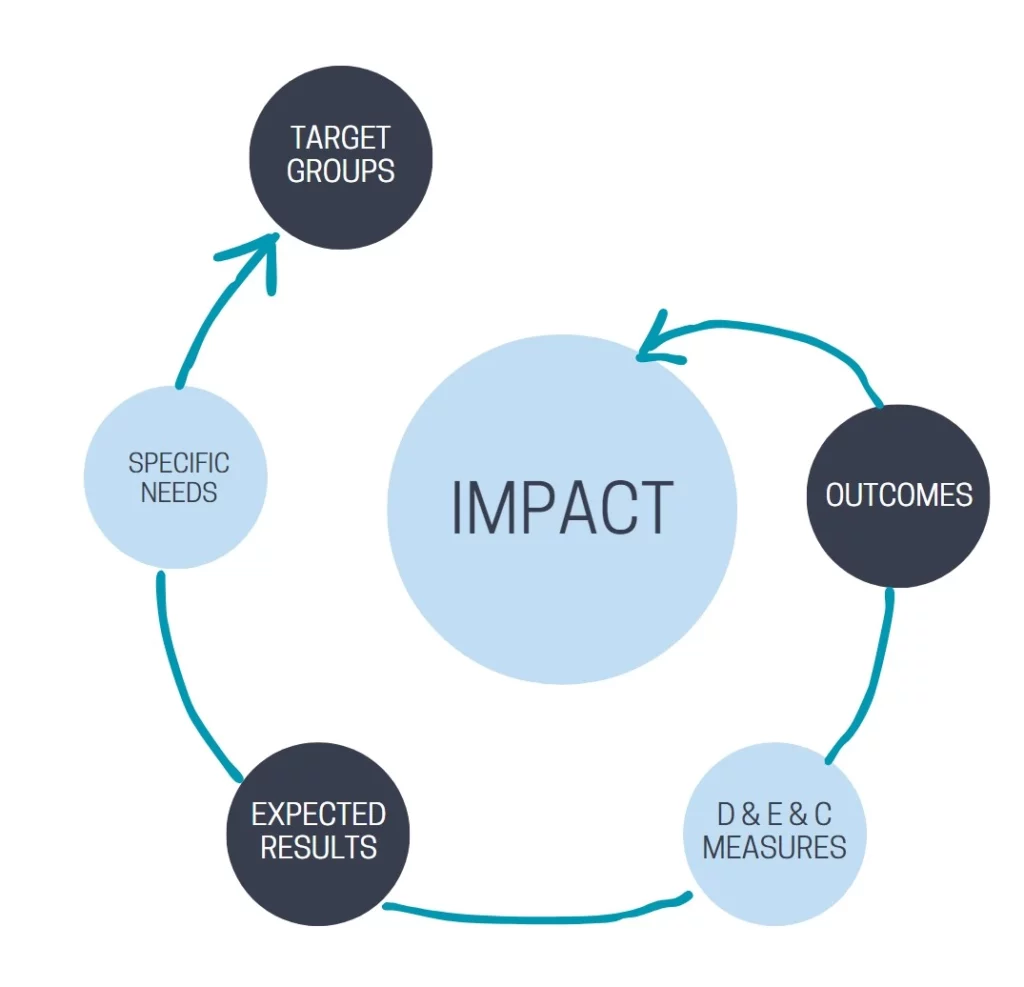
Tip #9 – Be honest.
Don’t hide obvious weaknesses or risks. Deal with them honestly and proactively. Show the reviewers that you can assess the risks well yourself.
Address these issues and indicate measures to mitigate the risks. If you feel something needs explanation, explain it.
Tip #10 – Consider the interdisciplinary composition of the panel of reviewers.

The panel of reviewers is very interdisciplinary. There can be experts from natural sciences, social sciences, industry, gender studies, and many more.
- It is not always easy to find consensus.
- Include all reviewers; do not assume specialized knowledge!
Tip #11 – Get advice.
Tip #12 – Evaluate yourself.
In the Funding & Tenders portal, you will find self-evaluation forms for different call types. They help to focus on the essentials in the proposal.
Last but not least, The abstract is essential.
Your request is just one of many. Stand out from the crowd immediately and make people want to read your proposal. Arouse curiosity and outline the specific problem, your approach, and your goals, and give a preview of the expected effects.
Make the abstract meaningful. Do not underestimate the abstract, even if you have followed all the Horizon Europe proposal tips above.


How long is the time to grant?
As a rule:
Evaluation results are communicated to the coordinating institution within five months after the last submission deadline.
The signing of the grant agreement takes place eight months after the last submission deadline.
Which documents are relevant?
We have compiled a list of links to documents provided by the EU Commission that are relevant to the application process:
- Strategic plan of Horizon Europe (2021-2024)
- Current work programmes (2023-2024)
- General annexes (2023-2024)
- Horizon Europe programme guide (2021-2027)
- Horizon Europe online manual (2021-2027)
- Some NCPs (National Contact Points) offer annotated application templates with additional tips that can be very helpful. Please ask your NCP for more information.